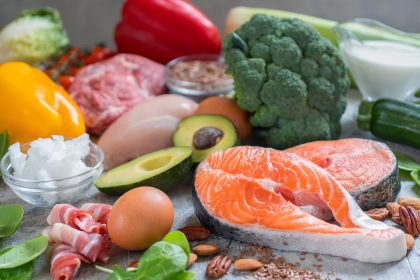The innocent-looking stick of gum in your pocket harbors a concerning secret. As microplastics continue infiltrating our environment—from oceans and drinking water to everyday items like tea bags and produce—groundbreaking research has uncovered yet another unexpected source of these potentially harmful particles: chewing gum.
While many associate the satisfying chew of gum with fresh breath and stress relief, few realize they might be exposing themselves to hundreds of microscopic plastic particles with each piece. This revelation comes at a time when scientists increasingly worry about the accumulation of microplastics in human bodies and their long-term health implications.
A comprehensive examination of both synthetic and natural gum varieties has yielded surprising results that may change how consumers view this common treat. The findings challenge previous assumptions and provide valuable information for those concerned about daily plastic exposure.
Both natural and synthetic gums release similar microplastic amounts
Perhaps the most startling revelation from recent research presented at the American Chemical Society’s spring meeting centers on the comparable microplastic release rates between natural and synthetic gums. The study tested ten popular brands available in the United States—five natural and five synthetic varieties—and found minimal differences in their microplastic shedding.
The synthetic gums released an average of 104 microplastic particles per gram, while natural gums released approximately 96 particles. This similarity challenges the widespread assumption that “natural” gum alternatives would contain significantly fewer plastic materials or none at all.
The research team, based at UCLA, discovered that natural gums primarily contained polyolefins despite their plant-based marketing, while synthetic varieties had higher concentrations of PET, polystyrenes, and other petrochemical-derived substances. This distinction highlights the different sources of microplastics across gum types while confirming that neither variety offers a truly microplastic-free option.
One piece of gum can release up to 637 microplastic particles
The magnitude of microplastic release from chewing gum proves genuinely concerning. Study findings revealed that a single gram of gum could shed up to 637 microscopic plastic particles during normal chewing, with averages hovering around 100 particles regardless of gum type.
The research methodology involved participants rinsing their mouths with deionized water before chewing assigned gum samples for varying durations. Researchers collected saliva samples at specific intervals to measure the accumulation and characteristics of released microplastics.
Most of these particles measure approximately 82 micrometers, with over half being smaller than 50 micrometers—dimensions small enough to potentially enter the bloodstream and various organs. The invisibility of these particles makes their presence particularly troubling, as consumers have no way to detect or avoid them while enjoying their favorite gum.
First 8 minutes release 94% of all microplastics
The timing of microplastic release presents an important finding for regular gum chewers. According to the research, 94% of all microplastics shed during gum chewing occur within the first eight minutes. This front-loaded release pattern suggests that extended chewing does not significantly increase microplastic exposure compared to brief chewing sessions.
The study included participants who chewed gum for both four-minute and twenty-minute intervals, with researchers collecting saliva samples throughout to track microplastic accumulation rates. The dramatic early release followed by minimal additional shedding indicates that the initial minutes of gum chewing represent the period of highest exposure risk.
This finding carries practical implications for gum enthusiasts, suggesting that the habit of chewing multiple pieces of gum throughout the day likely exposes individuals to more microplastics than chewing a single piece for an extended period. Each new piece initiates another surge of microplastic release during those critical first minutes.
Microplastics accumulate throughout the human body
The concern surrounding microplastics in chewing gum extends beyond mere presence—it stems from growing evidence about how these particles interact with human physiology after ingestion. Scientific research has detected microplastics in various human tissues and systems, including the lungs, bloodstream, placenta, and intestines.
The polymers responsible for gum’s desirable elasticity and chewability create the perfect conditions for microplastic generation during the mechanical process of chewing. As teeth grind against the gum base, tiny fragments break away and mix with saliva, creating an easy pathway for these particles to enter the digestive system.
Current research indicates these microplastics can trigger inflammatory responses in bodily tissues and potentially damage healthy cells through various mechanisms. Studies have linked microplastic exposure to DNA damage, oxidative stress, increased risks of metabolic disorders, and compromised organ function—though research continues to determine exact causality and dose-response relationships.
The microscopic size of these particles enables them to cross protective barriers within the body that normally filter out harmful substances. Once in the bloodstream, they can travel throughout the body and accumulate in tissues over time, with the long-term effects still being studied by researchers worldwide.
Simple steps reduce microplastic exposure from gum
While the research presents concerning information about microplastics in chewing gum, consumers can take practical steps to minimize their exposure while scientists continue investigating the long-term health implications of these particles.
The simplest approach involves reducing overall gum consumption, particularly for those who chew multiple pieces throughout the day. Since most microplastics release occurs within the first eight minutes, limiting intake to one piece rather than continuously reaching for more can significantly decrease exposure.
The type of gum appears less important than previously thought, as both natural and synthetic varieties release similar microplastic amounts. However, comparing microplastic release rates between different products reveals that chewing gum generally releases fewer microplastics than some other common sources, such as certain types of tea bags.
Proper gum disposal also plays a role in reducing environmental contamination. Always placing used gum in trash receptacles rather than discarding it on the ground prevents these microplastics from entering water systems and further polluting the environment.
For those particularly concerned about microplastic exposure, considering alternative breath-freshening options like sugar-free mints or natural herb-based products might provide similar benefits without the microplastic release associated with chewing gum.
The ubiquity of microplastics in modern life makes complete avoidance challenging, if not impossible. However, informed choices about everyday products like chewing gum represent one area where consumers can exercise control over their exposure levels.
As research continues exploring the health implications of microplastic accumulation in human tissues, maintaining awareness of potential sources and taking reasonable precautions represents a prudent approach. The chewing gum industry may eventually respond to these findings by developing truly microplastic-free alternatives, but until then, moderation offers the most practical solution for concerned consumers.













